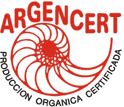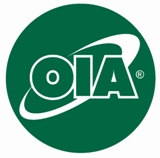European Commission produces atlas showing extent of nutrient pollution in Europe
Brussels, 26 April 2007
Nutrients are essential for plants and animals, but in excessive amounts they can lead to a significant decrease in soil and water quality. Nutrients can be introduced into the environment through fertilisers or other agrochemicals, and strict regulations have been adopted to limit their use. A new atlas, the work of European Commission scientists, provides for the first time a clear view on the pressure on eco-systems due to nutrients and their source. The atlas was the basis for identifying areas in Europe with the highest levels of nutrient pressure, which include large portions of The Netherlands, Belgium, Denmark, France, Ireland, and Italy.
The atlas is the product of the FATE initiative (Fate of Pollutants in Terrestrial and Aquatic Ecosystems) at the European Commission's Joint Research Centre, investigating the impact of
nutrients such as agrochemicals on the environment. Nutrients get into the environment through agriculture, wastewater treatment plants, industry, and so on. However there has been little research
into and no EU wide assessment of the contribution of these sectors to nutrient pollution and the extent of its impact. The FATE initiative was designed to specifically address this gap in
environmental research with particular emphasis on agriculture. The results of the project should help better implementation of existing legislation and also provide a scientific basis for any
future legislation.
For example, the information used in the atlas shows that the range of surplus nutrients in agro-intensive areas varies widely among European countries, with the Netherlands topping 200 kg/ha and Italy not exceeding 40kg/ha. There is also wide variety of levels within countries: for instance, France has an overall nitrogen excess of 50 kg/ha, whereas Brittany standing alone exhibits levels exceeding 120 kg/ha. The scientists were able to show that excess nutrient loss is often due to practices such as over-fertilisation, making prevention both relatively straightforward and low-cost. Indeed, applications of nitrogen fertilisers were found at times to be twice as high as crop needs. The FATE team was also able to identify a close link between increased nutrient pressures on the environment and high-density livestock production.
The team also evaluated the impact of several climate change scenarios, showing that farmers in already intensive production areas will be forced to increase their use of fertilisers to maintain optimum crop yields, while demand for water resources will also increase, further taxing Europe’s water supply.
For more information: http://ies.jrc.ec.europa.eu/
















